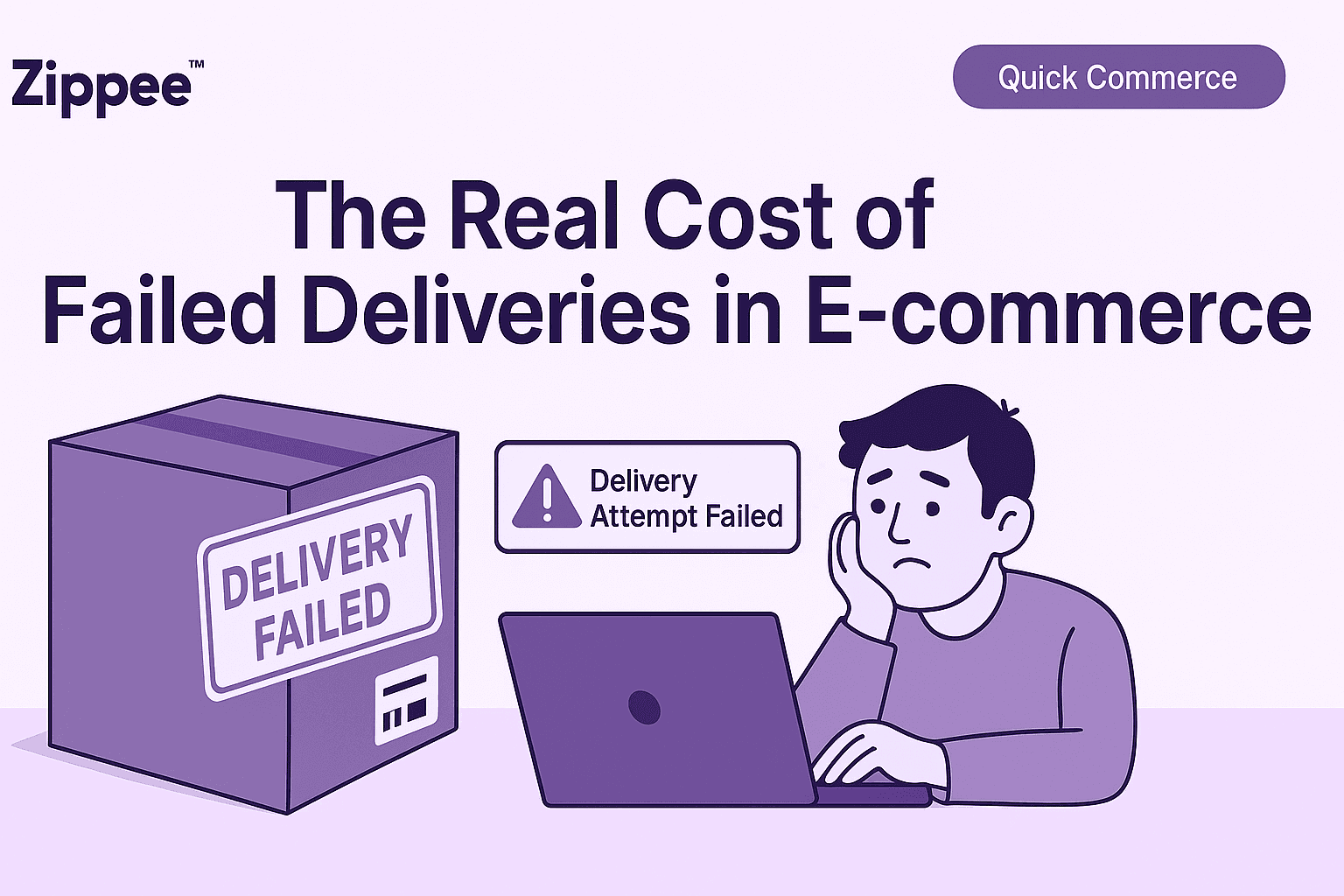
How to Increase First-Attempt Deliveries & Reduce RTOs for Indian E-Commerce? :
Picture this —
You’ve ordered a birthday gift online. You’ve been tracking it eagerly. Then, suddenly get a message that reads: ‘Delivery Attempt Failed.’ You’d be disappointed, right?
For Indian D2C brands, failed deliveries aren’t just a customer pain point, they’re a recurring revenue leak. As ecommerce grows rapidly, especially among direct-to-consumer brands, ensuring smooth, first-attempt deliveries is no longer optional — it's mission-critical!
What Is a Failed Delivery Attempt?
A failed delivery occurs when a courier is unable to successfully hand over a package to the customer. A RedSeer report estimates that Indian ecommerce businesses lose over ₹20,000 crore annually due to high RTO rates and failed deliveries. This has a direct impact on profitability, especially for high-growth D2C brands aiming for scale. And common reasons for failed deliveries include:
- Inaccurate or incomplete address
- Unavailable recipient
- Payment issues in COD orders
- Unclear delivery instructions
- Last-mile logistical delays
Each failure increases costs, affects customer trust, and eats into margins. In India’s competitive D2C space, these missteps can compound into major losses.
How Failed Deliveries Hurt Your Business More Than You Think
Over 15–20% of all ecommerce shipments in India face delivery issues, while Cash-on-Delivery orders account for nearly 30% of Return-to-Origin (RTO) cases (source: Unicommerce). These failed delivery attempts not only lead to added operational costs but also erode customer trust, particularly for D2C brands operating on tight unit economics:
- Each failed attempt means double the cost: fuel, labour, warehousing, and reverse logistics.
- Customer experience suffers: one delay can impact repeat purchases and NPS scores.
- RTO rates climb, and with them, inventory distortion and cash flow blocks.
How Zippee Reduces Failed Deliveries for Indian Brands
Zippee is redefining quick commerce logistics with its smart, D2C-first approach. Here's how we help brands avoid failed deliveries from the get-go:
1. Hyperlocal Warehousing with Dark Stores
With a network of dark stores across cities like Delhi, Mumbai, and Bengaluru, Zippee enables proximity-led fulfilment. This significantly reduces the last-mile leg, thereby improving first-attempt delivery rates.
2. Fast Delivery Pledge
Zippee specialises in ultra-fast delivery windows, including 60 mins, 120 mins, and same day drop-offs. This ensures customers are available and expecting the package, reducing missed handovers.
3. Real-Time Order Tracking
Brands using Zippee get end-to-end tracking through Zippee’s dashboard. This visibility helps proactively manage at-risk deliveries and improves transparency with customers.
4. AI-Powered Route Optimisation
By optimising rider routes intelligently, Zippee improves delivery density and success probability, delivering more orders on fewer trips, faster.
5. Waitlisted Onboarding = Controlled Quality
Zippee carefully curates the brands it works with, operating on a waitlist basis. This ensures high service consistency and avoids overloading the delivery network.
What Brands Can Do to Prevent Delivery Failures (With or Without Zippee)
While Zippee offers advanced fulfilment infrastructure, D2C brands can also follow these best practices:
- Use address validation tools at checkout.
- Let users add specific delivery instructions (“Leave with guard”).
- Offer multiple delivery options — including express or scheduled delivery.
- Proactively communicate with customers via SMS/WhatsApp at every stage.
- Regularly analyse failure data to find patterns and optimise operations.
Why India’s Top Brands Trust Zippee & You Can Too!
In today’s fast-paced ecommerce landscape, delivery is more than just logistics — it’s a core part of your brand experience. Zippee helps you take control of it. From 60-minute and 120-minute express options to same-day delivery, we enable brands to deliver speed, reliability, and trust at every doorstep.
Brands that work with Zippee don’t just move faster — they grow faster. Here’s what we’ve done for them:
- Up to 90% reduction in RTO rates
- 2x improvement in delivery speed
- Higher repeat purchase rates and stronger customer loyalty
And that’s not all—here are a few more reasons why top brands choose Zippee to power their Quick Commerce journeys –
- Scale and Network: Operating in 12+ cities, with 50+ dark stores, and 150+ active brands onboarded.
- Strong Tech Stack: Real-time dashboards, seamless integrations, AI-powered routing.
- Fastest Fulfilment Promise: Same-day and express delivery options with >98.5% delivery accuracy.
- Ownership Over Customer Experience: Zippee enables Quick Commerce via a brand’s own website and channels.
- Strong Backing: Zippee is backed by leaders like Kunal Shah (CRED), Ashneer Grover (BharatPe), Piyush Bansal (Lenskart), and the Haldiram’s group.
- Long-Term Vision: Zippee’s mission is to democratise quick commerce logistics for 100,000+ brands across India.
Conclusion
Failed deliveries have an influence on logistics, customer trust, operating expenses, and business growth. Adopting the appropriate techniques, leveraging technology, and staying ahead of industry trends may drastically reduce unsuccessful efforts and improve the delivery experience. Whether it's supercharged route optimisation, real-time tracking, or flexible delivery options, every advancement in delivery takes you closer to smooth logistical operations.
Take control of your deliveries now with smarter logistics solutions like Zippee, and make sure that every product arrives at the appropriate door, on time!





.png&w=256&q=75)













